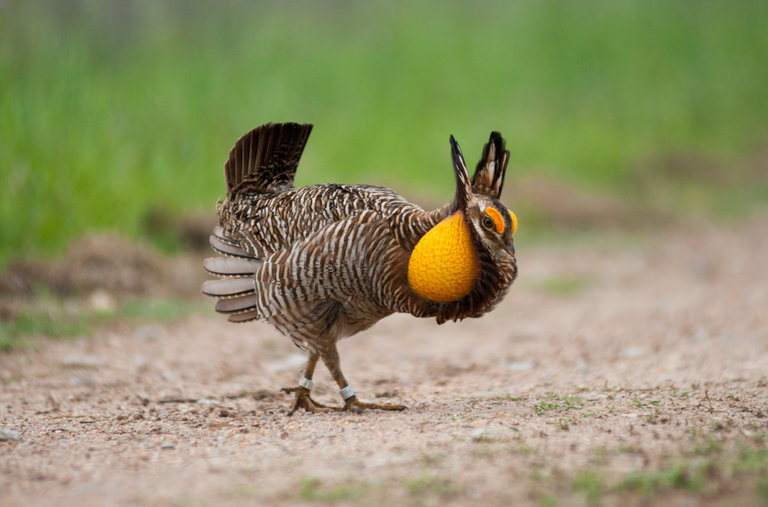HARTFORD — Mark Twain was a well-traveled literary superstar, so famous that his editor once journeyed to Washington to ask President Theodore Roosevelt if he would move Thanksgiving because it coincided with Twain’s birthday plans. (Twain moved his party.)
But in 1879, on a book tour through Europe, he craved the simplest foods from home, with agonizing specificity. Twain wanted Early Rose potatoes, a Vermont-bred heirloom, roasted in the ashes of a fire. Mussels from the waters around San Francisco. And hot broiled Virginia bacon.
He compiled a list, an extensive fantasy of a meal, which he imagined sitting down to enjoy right off the steamship when he got home. That list is now a snapshot of some of the most cherished regional American foods of his time.
But for a vast array of political, cultural and ecological reasons, few of Twain’s picks — terrapin, prairie chicken and raccoon among them — would be considered an integral part of our national identity today. This month, the audiobook company Audible released an eight-episode series, hosted by the actor Nick Offerman, that explores the reasons.
Mr. Offerman, who is best known for his role as the meat-loving municipal worker Ron Swanson in the television show “Parks and Recreation,” is a longtime fan of Twain’s work.
Before recording the series, “Twain’s Feast,” he lent his famous voice — low, steady, authoritative — to two of Twain’s audiobooks, reading “The Adventures of Tom Sawyer” and “A Connecticut Yankee in King Arthur’s Court.”

Mr. Offerman, a longtime fan of Twain’s work, had already lent his voice to two audiobooks of the author’s work.CreditChristopher Gregory for The New York Times
Mr. Offerman’s voice was shaped by Minooka, Ill., a small village outside Chicago where his family farmed corn and soybeans, and raised pigs. They caught lake fish: perch, speckled crappies, flat bluegills and largemouth bass with shimmering, olive-green backs. In Minnesota, where his family went on fishing trips, they occasionally caught snapping turtles and turned them into soup.
Mr. Offerman, who compared the taste of turtle meat to that of chicken, was eager to get his hands on some of the more esoteric foods on Twain’s list. In May, as part of the show, he organized a dinner at the Mark Twain House & Museum, the author’s carefully restored home in Hartford, where Twain lived with his wife, Olivia Clemens, after they were married in 1870.
Mr. Offerman asked Tyler Anderson, a Connecticut chef who competed on “Top Chef,” to put together a menu inspired by Twain’s list, and invited friends, including the author Andrew Beahrs, the actor Wanda Sykes and Christina Greer, a professor of political science, to join the feast.
Working out of a small food truck parked on the lawn of Twain’s house, Mr. Anderson produced an eight-course meal. It started with raw oysters with a frothy sherry-maple cream, and moved on to smoked raccoon sausage wrapped in caul fat. The fifth course was sheepshead, a tough, bony fish he poached in olive oil and served with potato purée.
As Mr. Anderson brought the dish to the table, he called sheepshead the ugliest animal he’d ever seen in his life — a fish, but with humanlike front teeth. “It’s really very, very disturbing,” he said. “And it didn’t sauté well.”
The audio series, loosely based on Mr. Beahrs’s 2010 book “Twain’s Feast,” includes plenty of snippets from that dinner, along with excerpts from Twain’s fiction and memoir, weaving in new interviews and reporting that examine changes all over the country through the prolific author’s palate.
Twain, who had worked as a riverboat pilot on the Mississippi, looked forward to eating sheepshead whenever he got to New Orleans. “When he liked food it was very much contextual for him,” Mr. Beahrs said. “It was all about the food itself, but also the people he was with and places where he ate it.”
Mr. Beahrs said that for Twain, the fish was an emblem of the brief, golden age of the steamboat, before he witnessed the rapid transformation of the river, as levees and dams were built to try to control its channels.
Each episode of the series focuses on a different ingredient that Twain loved. Raccoons, like sheepshead, are still plentiful, but the recipes for its meat that were published in the original edition of “Joy of Cooking” have since been edited out. Tastes change.
Todd Whitney, a producer of the show, visited the small town of Gillett, Ark., which holds an annual raccoon dinner. The episode takes twists and turns, exploring Twain’s complicated relationship with African-Americans, in both his life and his fiction, as well as the racist language that he used in his work.
Excerpts from the dinner are woven into the audio series “Twain’s Feast,” which is loosely based on Andrew Beahrs’s 2010 book by the same name.CreditChristopher Gregory for The New York Times
The definition of American food, since Twain outlined it, has broadened, while the country’s wild ingredients have dwindled. One episode zooms in on prairie chicken — a small, curvy grouse with brown stripes that was displaced by the corn industry.
The bird, which was listed as endangered in the 1960s, has disappeared from the American cook’s larder, but it was once abundant, hunted for sport and food, and its familiar, gurgling call rang out across the prairie. Efforts to rebuild its population have been unsuccessful.
Twain’s appreciation of prairie chicken serves as a small piece of culinary history, a taste of the wilderness before industrial corn and soy farming transformed the landscape. Mr. Anderson tried, but was unable to find prairie chicken for Mr. Offerman’s dinner. He settled instead on a turkey, which he roasted until it was golden brown, and served it with cranberry sauce.
“The foods Twain loved, we took for granted as American classics,” Mr. Beahrs said. “But these things that are part of the richness of everyday life — they can vanish very, very quickly.”





